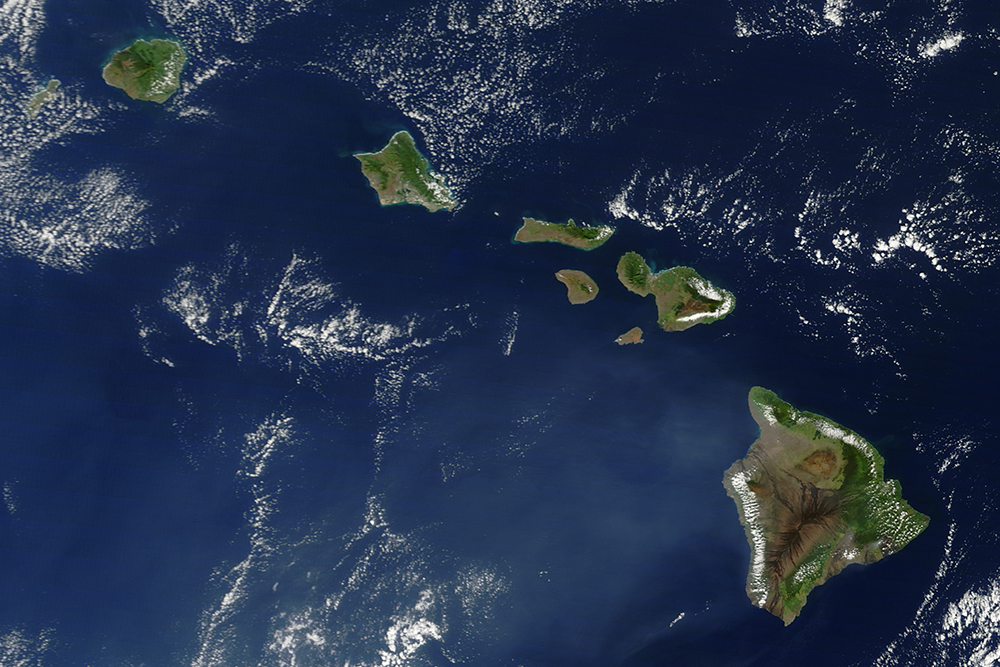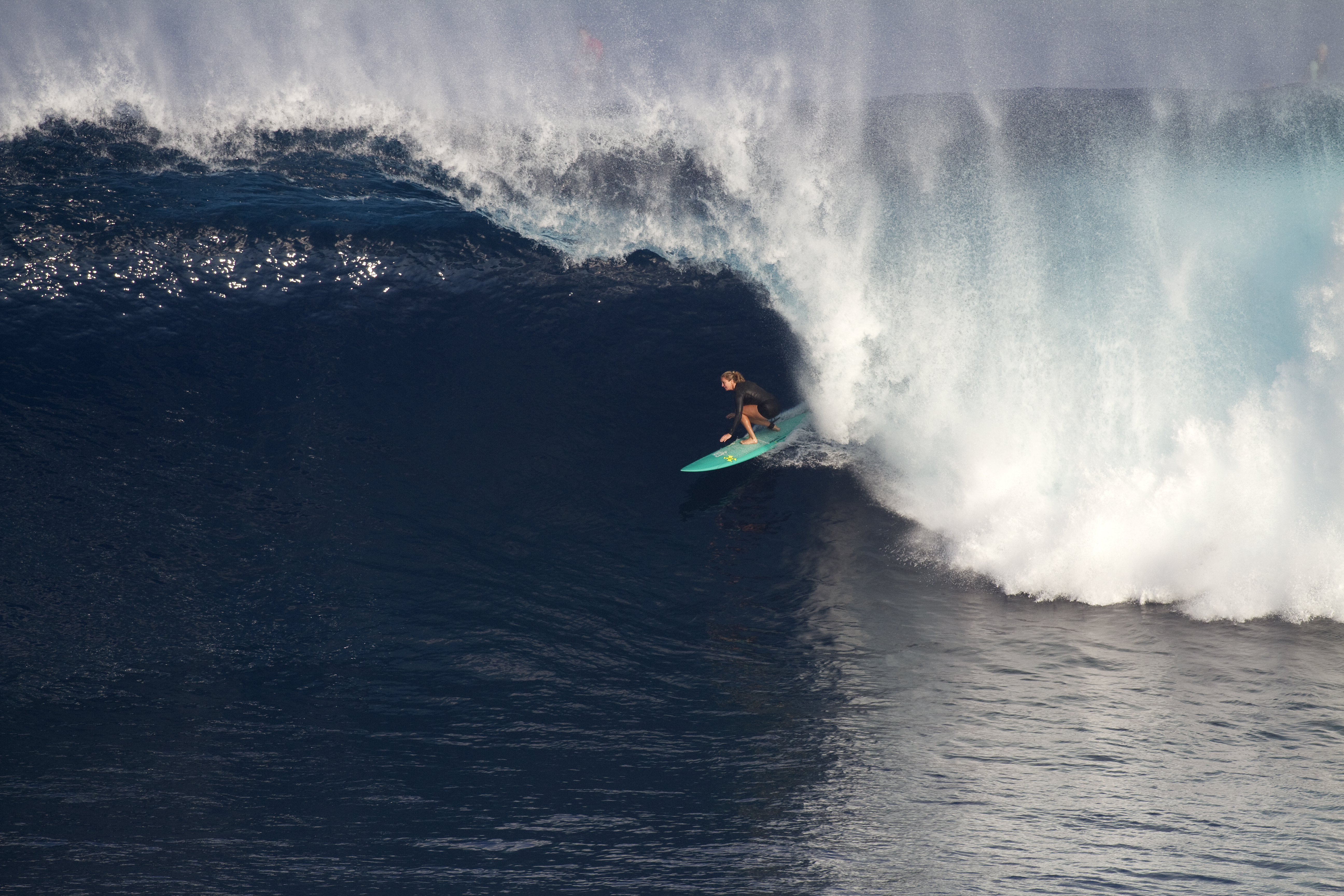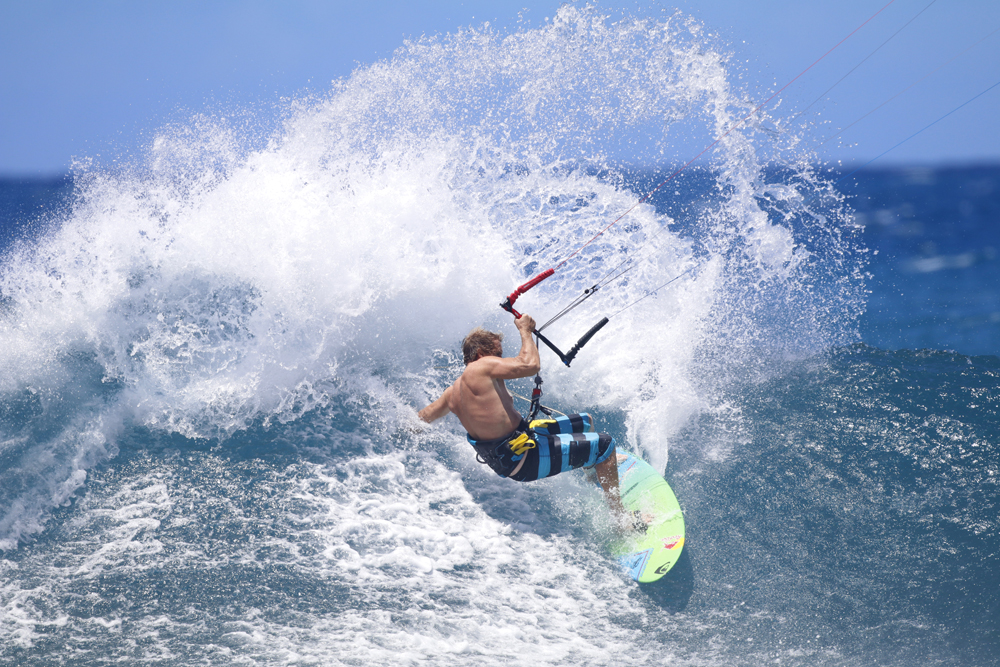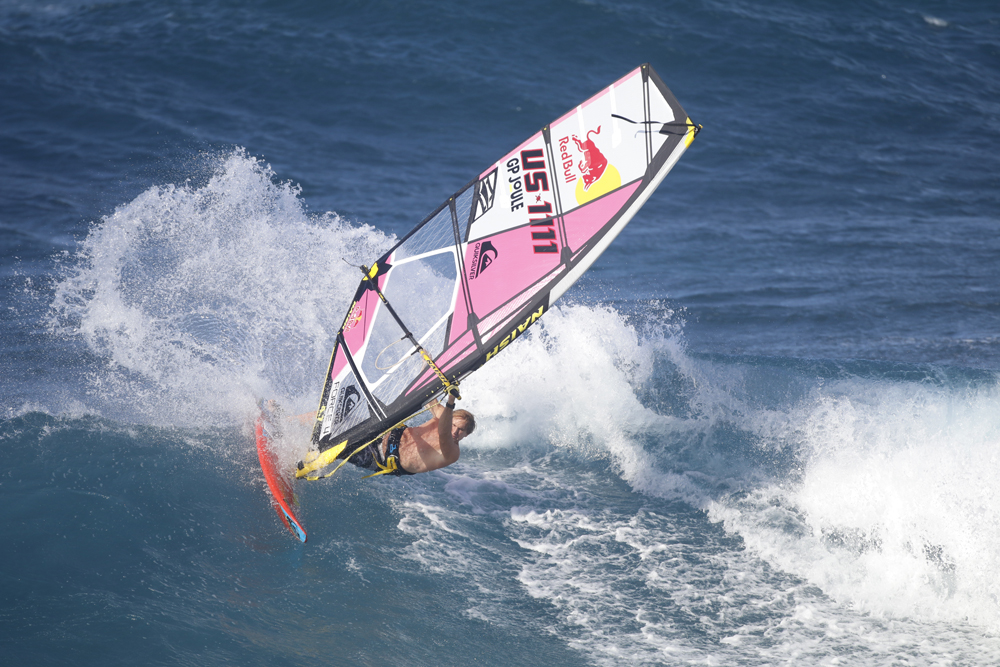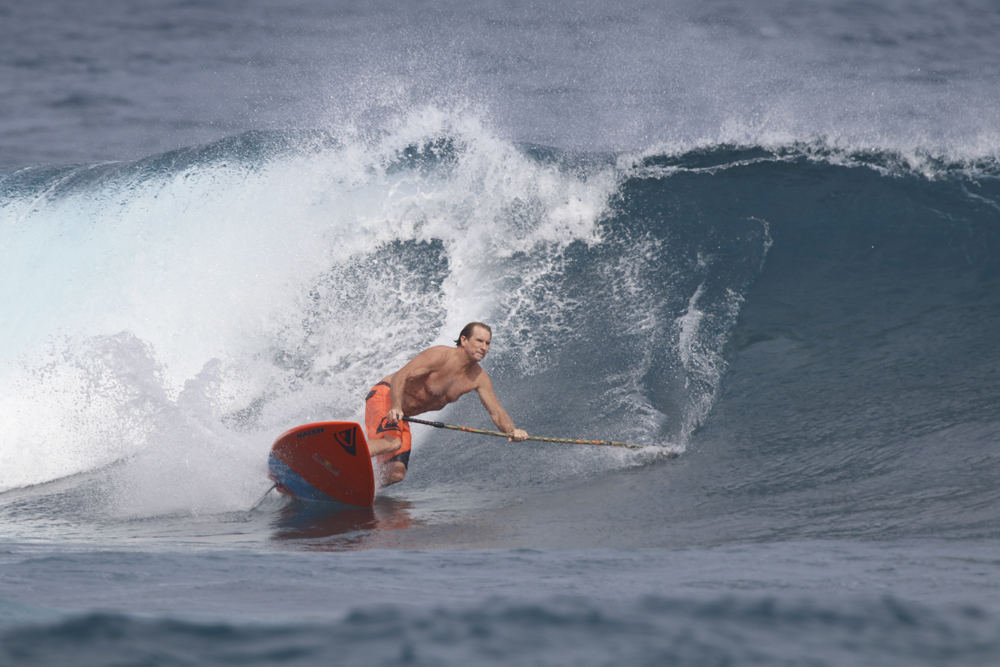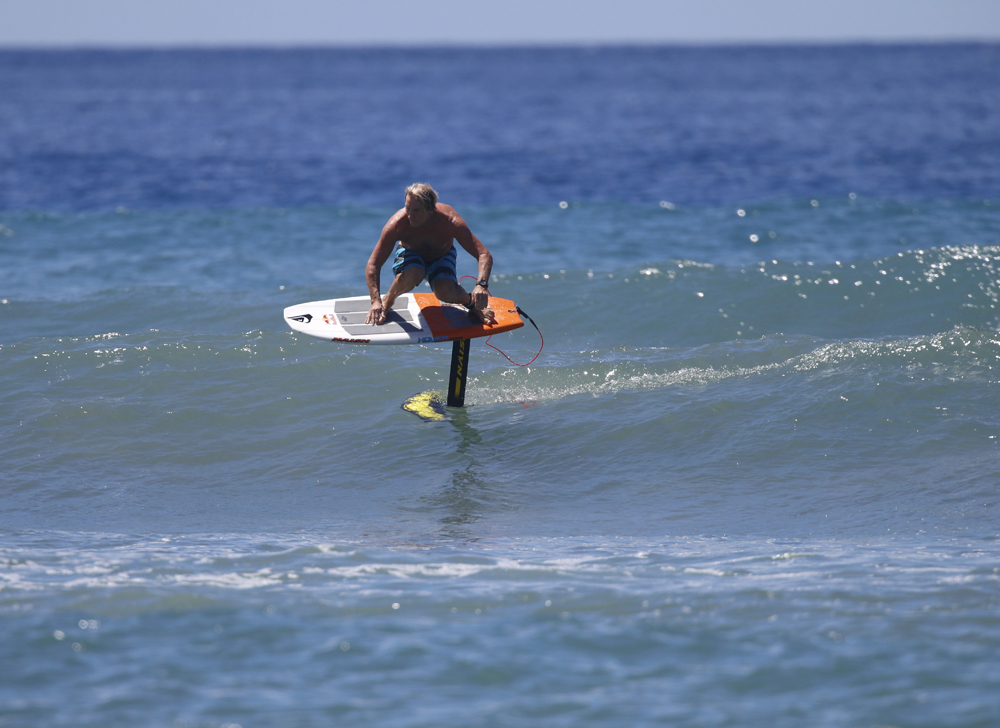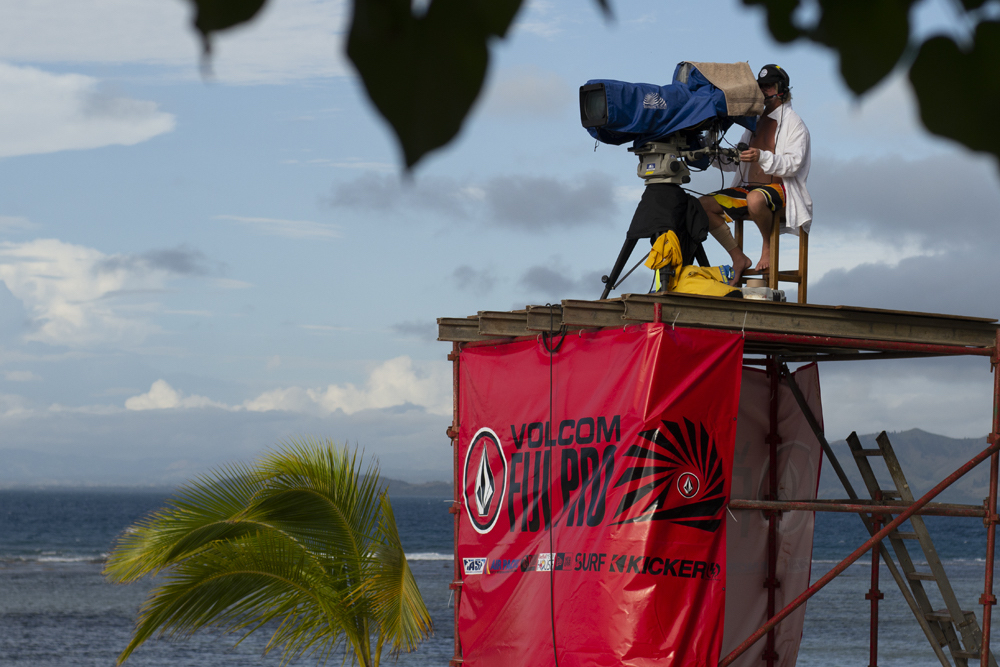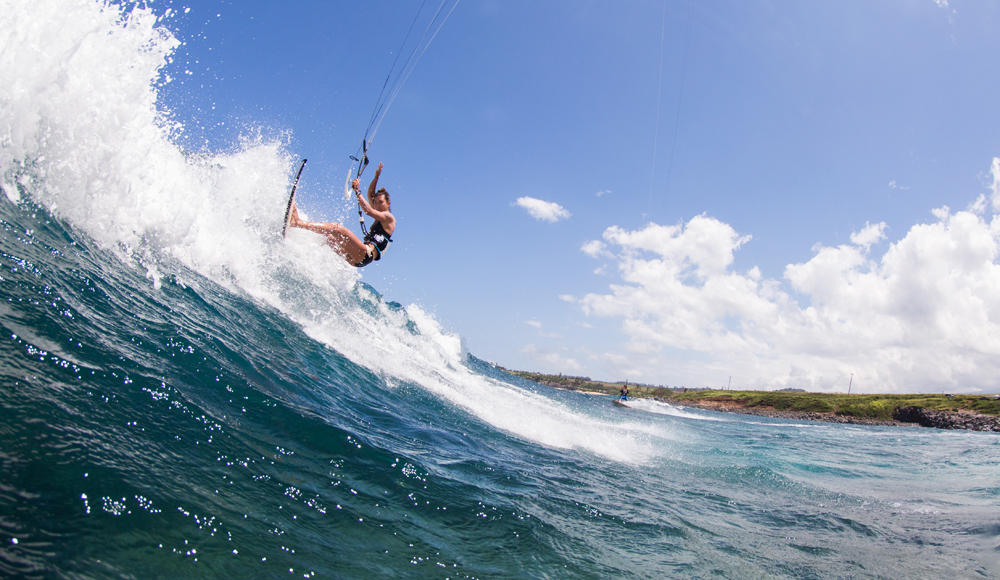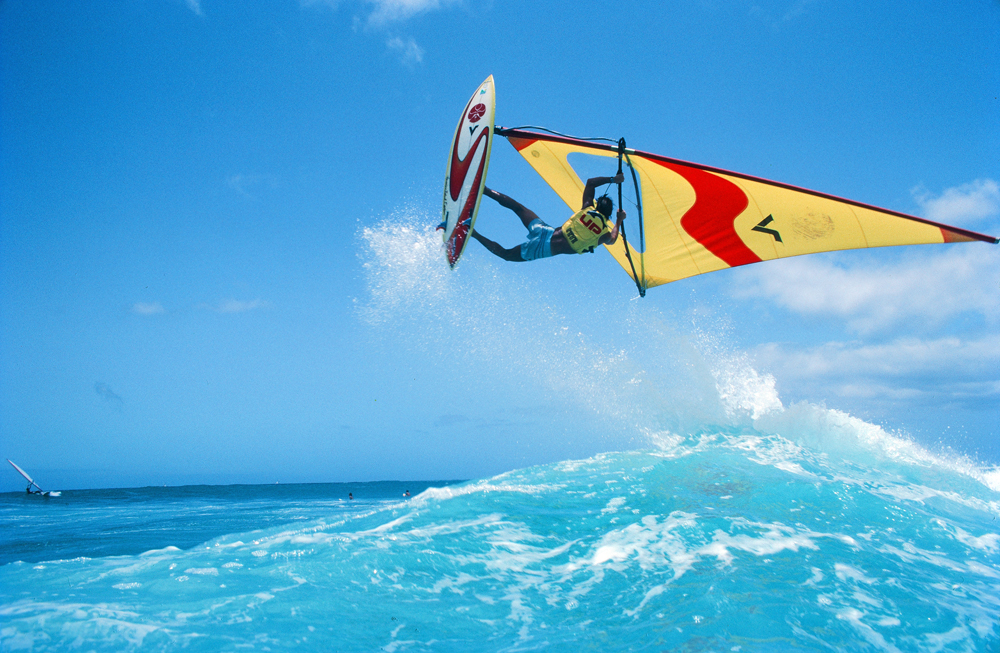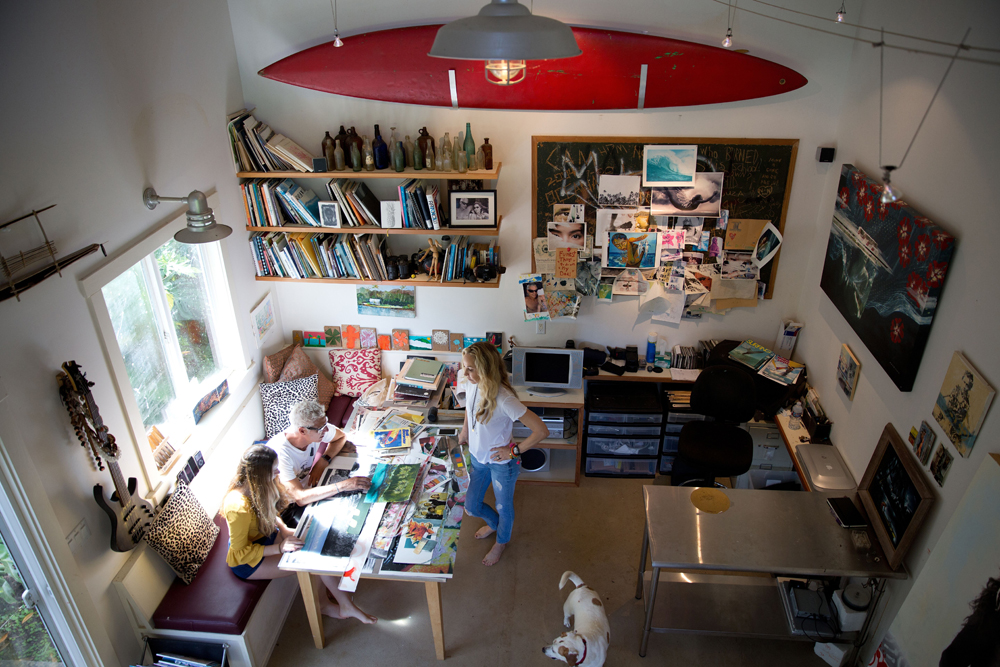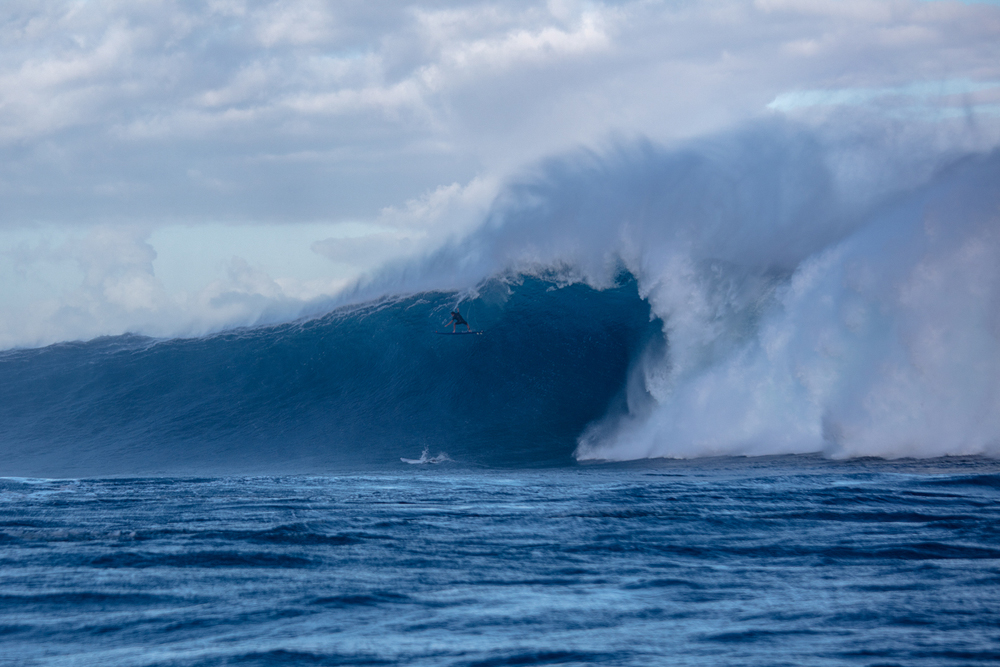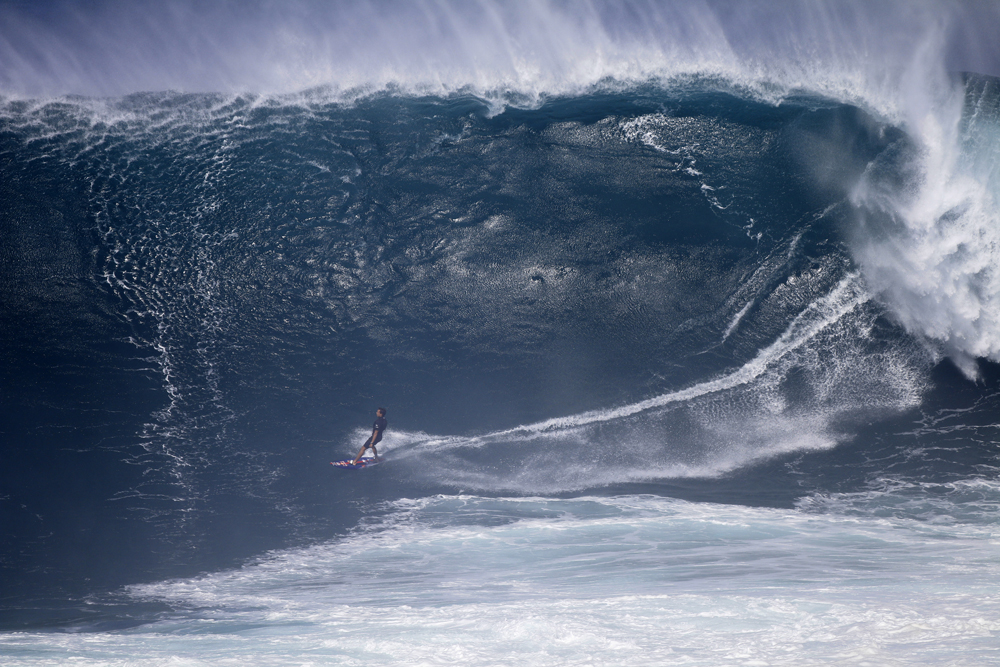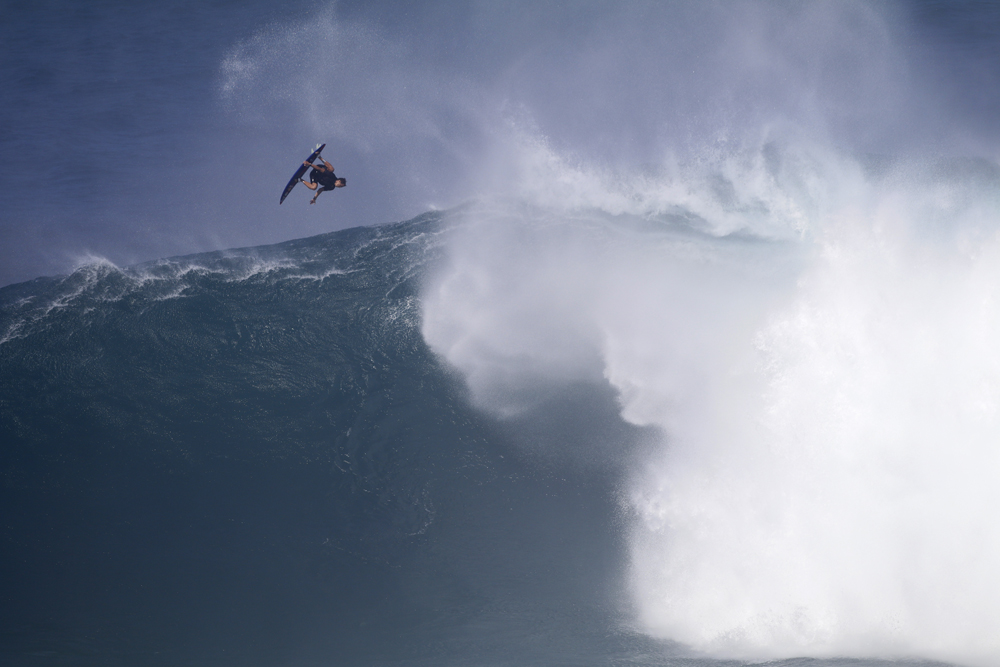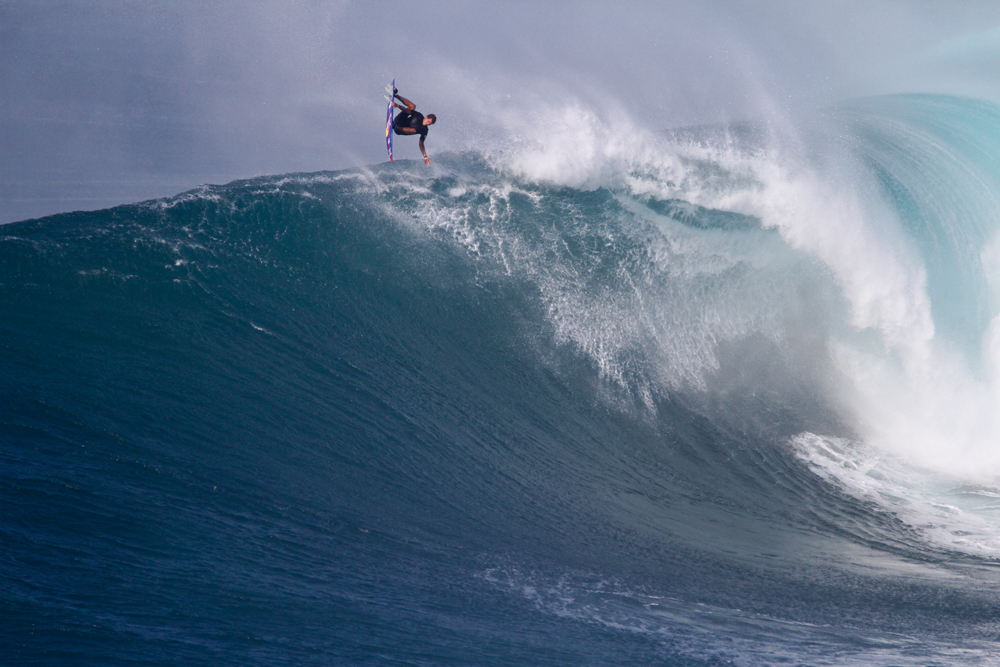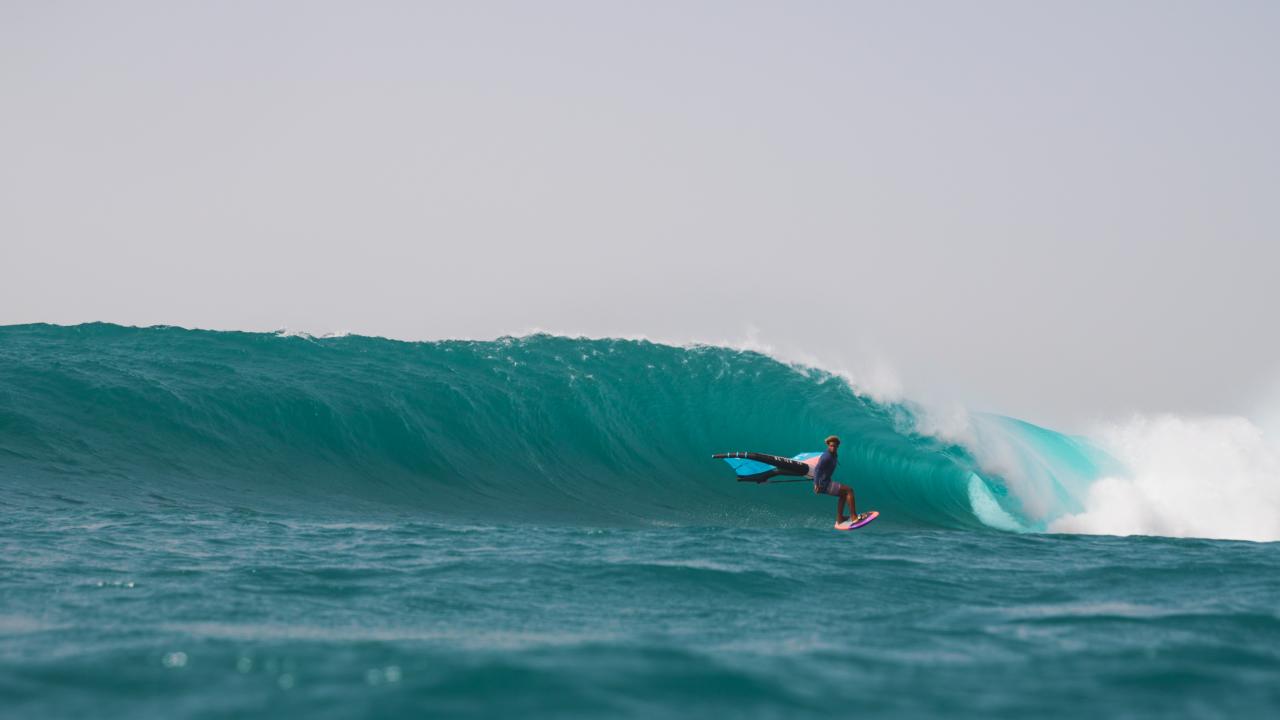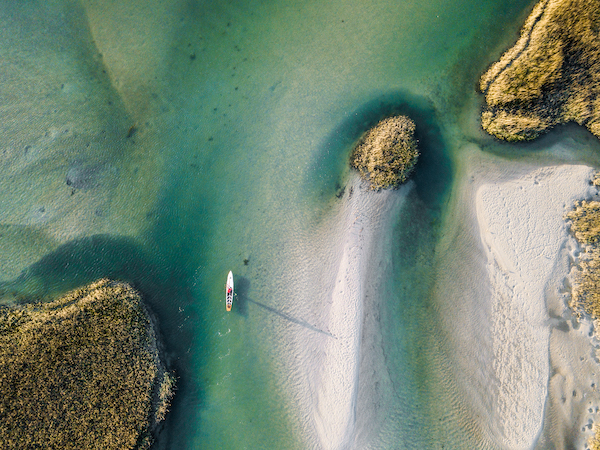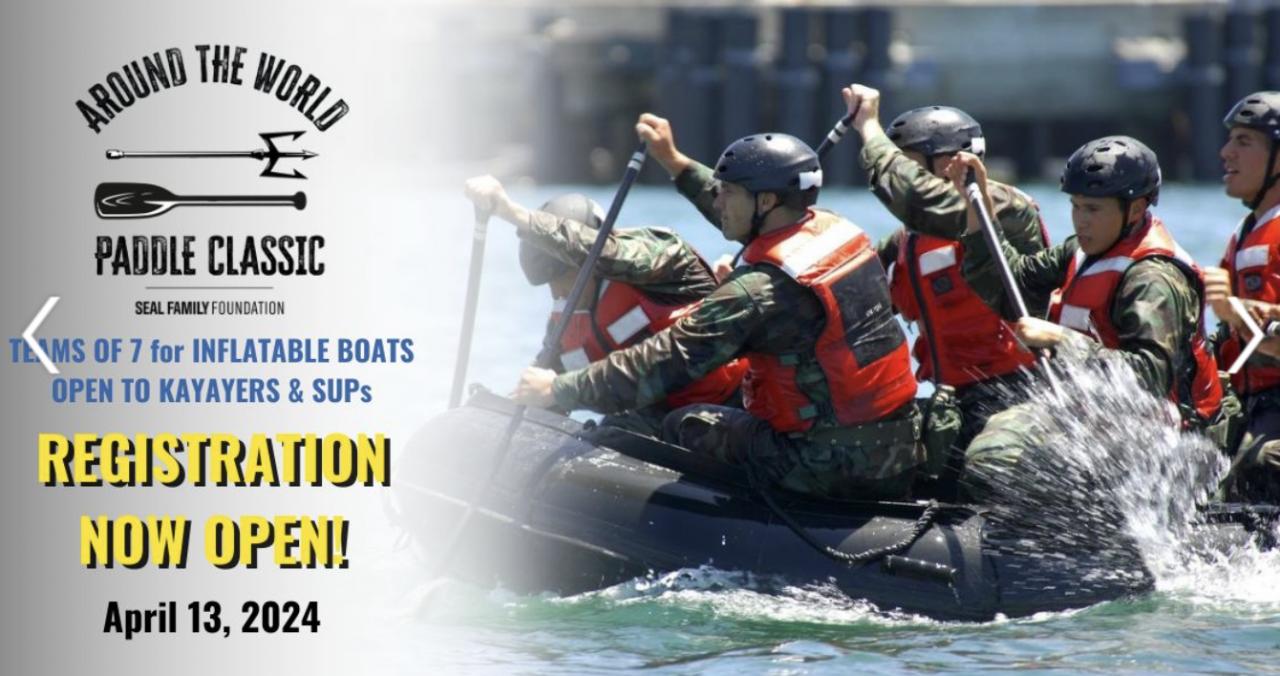Some of the best watermen and women come from Hawaii. Some are born there, some move there, others co-locate in order to train and practice in the most competitive water sports environment in the world. Regardless, there's little debate that Hawaii is the ultimate destination for water sport athletes interested in finding the most exciting and challenging conditions on the planet.
The Hawaiian island chain is over 5 million years old. Each island was formed from a geologic hot spot in the earth's crust that spewed lava from the ocean floor to shape what has become the largest seamounts in the world. The rotation of the earth and the shifting of its tectonic plates created this dotted chain of islands as each one passed over the hot mass of magma. Each island is geographically and physically shaped and positioned uniquely to every other island in the archipelago and gets its physical properties from the speed and direction of the earth's rotation during those formative years.
Kauai is the oldest island in the chain at the far eastern end of the line with the big island being the newest at just over 700,000 years old. Each island has its own distinct personality, climates, weather patterns, and characteristics that make it unique to its siblings. The outline of each island is its fingerprint and is responsible for shaping the outcomes of each incoming swell. As a result, the types of athletes that emerge from each island have a skill set that's been naturally developed and tailored to the specific characteristics of the island where they reside.
Why is it that the best windsurfers and kiters come from Maui? Obviously there are the addicts that move there specifically for the wind, but what about the athletes that grow up on the island? Connor Baxter grew up learning to surf and windsurf on Maui though his father Keith is a native from Oahu. "Maui has the most consistent wind of all the islands. Its super rare to get a good windsurfing day on Oahu unless you plan a strike mission to a place like Diamond Head. Same goes for Kauai. Surfing is the core sport on those islands".
Growing up on Maui requires that you embrace the wind on a daily basis in order spend any time out on the water. Maui's distinct shape and position within the island chain is what creates its windy disposition. The north shore's exposure to the predominantly easterly trade winds coupled with the topography of the island's twin volcano peaks compound the wind's speed and strength creating a venturi effect along the north shore of the island from Haiku to Kahului. This part of the coastline is also directly exposed to incoming swell from the north Pacific creating the ultimate wind and wave playground for the most elite water athletes in the world. If you're fortunate enough to grow up in this environment and have the passion and aptitude for riding waves, there's a good chance you'll become one of the best in the world.
If you're a core surfer, the wind can be extremely frustrating if its coming from the wrong direction. Side shore winds are a constant on Maui once the trades kick up in the late morning to early afternoon. If you can't find a way to have peace with this daily occurance, you're going to be extremely challenged unless you have an air game like Matt Meola, Albee Layer, or John John Florence. Ultimately you have no choice but to embrace the wind by learning to windsurf, kite, or downwind paddle. Fortunately for you, you're in one of the best places on the planet to master any and every wind sport known to man.
It’s no wonder that some of the most well rounded watermen and women come from Maui. Just look at some of the most notable young athletes who live there today - Kai Lenny, Connor Baxter, Paige Alms, Zane Schweitzer, Fiona Wilde, Bernd Roediger, Andrea Moller. Each of them is just as comfortable on a shortboard, a windsurfer, a paddle board, or a kite and each of them embraces the concept of wave riding regardless of what's under their feet or in their hands. The unique wind and wave conditions on Maui have shaped their development as professional athletes and forced them to become well rounded and open minded when it comes to the equipment they ride. The same is true of the generation that preceded them. Look no further than Laird Hamilton, Gerry Lopez, Robby Naish, Dave Kalama, Pete Cabrinha, Chuck Patterson and others. They chose to live on Maui because they embraced the diversity and opportunity that the wind presented every time and anytime they ventured out for a wave riding session.
Still there's a difference between those that grew up on the island and those that moved there out of pure addiction to wind and waves. Most of the younger athletes we think of today were born and raised to be water people by their families. Zane Schweitzer's family created the sport of windsurfing. Connor Baxter's mother Karen was a professional windsurfer, his father was a successful windsurfing equipment manufacturer and distributor. Kai Lenny's middle name is Waterman (literally). All of them were born into water families from parents who made life choices to chase the wind and live the ideal water sports lifestyle in the most idyllic water environment possible.
It’s hard to argue these days that anyone has done it better than Kai. His list of accomplishments is a testament to his ability and dedication to multiple sports. He's won the 32 mile Molokai 2 Oahu race (M2O), become world champion of the big wave tour, competes at the highest level in wave sailing events, has recently dominated the foiling category in just about every sport that recognizes the foil, and he's only 26 years old. A lot of us could see Kai's potential as we followed his career in the stand up paddle scene and knew he had the potential to do amazing things in any sport he chose. But the "king of preparedness" quickly demonstrated to the rest of the world at last year's Peahi Challenge that he is undoubtedly the most talented waterman in the world.
A similar event occurred in 2012 at Cloudbreak when the ASP World Championship Tour was there for the Volcom Fiji Pro. A Code Red swell was headed to Fiji and was predicted to create record setting conditions. The live stream for the event was a logistical nightmare as Auxillary Channel's Brian Reardon explains the panic and frustration of moving all of their filming equipment from Cloudbreak, over to Restaurants, then finally back to Cloudbreak as the swell was filling in and the go-no go decision for the event was being discussed.
“The waves were 20 to 25 feet. We were in the tower which is attached to the reef and the whole reef was shaking from the impact of the waves. One of the guys in the boat beneath the tower almost got chopped in half when the white water from a wave lifted him up and smashed the entire boat against the underside of the tower”, says Reardon.
At the same time, every big wave charger in the world was landing at Nausori airport hoping for a opening in the contest window that would give them an opportunity to sit in the lineup and meet this legendary swell. And that's how it played out. Within the first few heats of the event, tour commissioner Barton Lynch pulled the plug on the event calling the conditions too dangerous for the best surfers in the world. But the stage had already been set. The cameras and operators were in place, the commentators were mic'd up, and the world was sitting at their computers in anticipation of the hyped swell. With everything in place, the order was given to roll camera, and as a result we now have a digital record of the rides that were had and the waves that were ridden all captured in the highest quality digital format of that time.
I had the opportunity to chat with another big wave surfer from Maui, Pete Cabrinha, who told me of a similar story of a career being made as a result of being in the right place at the right time. Pete was born and raised in Kailua on the windy side of Oahu and later moved to Maui. Pete started out as a windsurfer, but contrary to other Hawaii-born waterman, Pete wasn't necessarily groomed to be a water athlete by his family. Instead, Pete was actually the first waterman of five generations of Cabrinhas born in Hawaii, but he picked things up quickly and built an impressive career as a windsurfer, big wave riding record holder, tow surfer, member of the original Strapped Crew, and now founder of one of the top kite brands in the world.
Back before Pete had established himself as a waterman icon, he was a windsurfer chasing sponsorships and building his career. In 1980, Victory wetsuits was interested in taking a closer look at Pete and invited him to come out to the one-design World Championships in Okinawa. Pete accepted the invite and boarded a plane with the only windsurfing equipment he owned - a 7’ wave board and a set of sails. Soon after his arrival, a typhoon hit the area sending massive wind and waves to the event site making it unsafe and impossible to hold the race event. However, the conditions were absolutely epic for a wave sailing session and Pete was the only person on site with the equipment and talent to take advantage of the conditions. Pete put on a clinic that day that gained him a sponsor and ultimately launched his career as a competitive athlete.
"The event was put on hold for days, I was able to continue to sail through the upswing and downswing of the storm, and Victory pulled me out of the competition as the footage of me windsurfing through the storm made it back to Tokyo. I guess they were convinced and they signed me up,” says Cabrinha.
He has since gone on to prove his abilities in multiple sports across multiple disciplines and is now sponsoring and grooming the next generation of wind athletes to follow suit.
Fast forward to the Peahi Challenge of 2018. Similar scenario. A huge swell was aimed at Peahi on Maui's north shore for the WSL Big Wave Tour. The best big wave riders in the world were anxiously awaiting the fourth and final event of their season - the one that would crown a 2018 world champion. On the day before the event, Kai posted a video on Instagram describing his ritual for a big day out at Jaws. "Tomorrow is going to be a big day and like any day out at Jaws, I always go in prepared for anything. I pack my windsurfing gear, my kites, my tow boards, my paddleboards, and my big wave guns and anything else I might need knowing that if I don't bring it, I'll need it", said Kai.
Well, similar to 2012 at Cloudbreak, something did happen. The men's big wave contest was cancelled within the first heat when the waves were considered too big and dangerous for the best big wave surfers in the world. "That day was the biggest swell I've seen since I started surfing Jaws", said Kai.
It was the beginning of Act 1. The stage was set, the audience had packed the bluffs, the WSL commentators Dave Kalama, Peter Mel, and Kaipo Guerrero were on the mic, and the cameras were rolling. This time there were only a small few that were prepared for the unexpected and one of those few was Kai Lenny who had packed a jet ski and his tow board and was 100% prepared to put on a show that to this day is still one of the most impressive displays of wave riding the world has ever seen. "Most of the athletes from the event didn't want to take a chance going out there after the contest was called", says Kai. "One bad wipeout and they could jeopardize their ability to surf the next day in the contest. But, I knew I couldn't let that day of tow surfing go by. It was just too good."
It’s become known as "the Kai Show" and that's truly what it was. The line up was practically empty. Everyone on Maui had rightfully assumed that Jaws was going to be consumed all day by the WSL event making it impossible for anyone without a contest jersey to get any waves. But true to his nature, Kai Lenny was prepared for anything and that commitment and dedication that has come to define Kai paid off in spades as he unleashed his big wave abilities in his own backyard surprising even himself with the confidence of his turns, air drops, and above the lip rotations. He tow surfed Jaws that day for hours virtually alone in some of the biggest conditions we've ever seen and the whole world watched in amazement not realizing before now how talented this young athlete from Maui had become and just how comfortable he was in super-sized conditions at Peahi. "My biggest gain that day was the elevation of the thought process to take my surfing to the next level. It was a rare opportunity to get that many waves giving me that much more experience and confidence so that the next time it happens, I'll be able to do even better."
If you didn't know who Kai Lenny was before that day, you certainly knew him now and are forever convinced that he is truly the best big wave rider in the world today. "Right now I'm really focused on improving my surfing. All my other sports really benefit from being a better surfer."
Personally I'd love to see more water athletes broaden their skill set by trying more equipment. Falling back into beginner mode in a new sport can be incredibly rewarding through daily progression and increased water time that might otherwise go unused. Consider the move that John John Florence made last summer when he registered for the prone division of M2O. It was exciting to see one of the most talented surfers in the world branch out and compete in a paddle sport that is measured by pace and endurance rather than speed, power, and flow. "It was amazing, I had so much fun. I hope to come back and do it again next year" said Florence.
That race is a total grind and not one that people sign up for out of pure spontaneity. It takes a tremendous amount of physical and mental preparation to paddle those 32 miles. For John John the time he put into training was a healthy distraction while rehabilitating an injured knee he suffered while surfing. Combined with his affinity for sailing and his ability to read the wind, the M2O downwind prone division was a solid fit for the former world champion surfer.
The sport of foiling has certainly created some diversity in the quivers of surfers, windsurfers, and kiters across the globe proving that there is an appetite among water athletes for more diversity in equipment and wave riding approaches. It’s a well known fact that foiling has given us all more opportunities to be on the water by widening the range of what's considered rideable. Connor Baxter says "foiling has made people excited about water sports again. Just look at guys like Dave Kalama who's as excited as a 10 year old to be out on the water riding a foil all day every day."
From small mushy waves to light wind conditions, foiling has given us a chance to get on the water on the days where we would otherwise stay dry. It’s become the new common denominator across water sports. Surfers, windsurfers, kiters, and downwind paddlers have all embraced the benefits and exhilaration of the foil and are exploring its potential in all kinds of waters around the world.
Regardless of the type equipment or the conditions of the day, all of us are ultimately looking for more ways to be on the water doing the things we love with the people we love to share them with. Every day presents an opportunity to get out on the water. The challenge is deciding what to ride to optimize the conditions at that moment. Having a wide variety of options only makes that decision easier. And if you're one of the fortunate ones living a lifestyle where that's your biggest decision of the day, you're on the right track. Keep it up.

